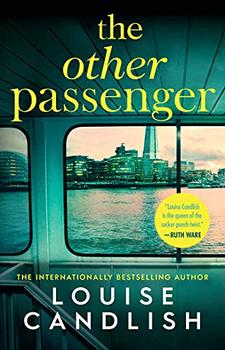Summary | Excerpt | Reviews | Beyond the Book | Read-Alikes | Genres & Themes | Author Bio

This article relates to The Other Passenger
 Louise Candlish's narrator in The Other Passenger, Jamie Buckby, suffers from tunnel phobia. It is this affliction that causes him to quit his professional occupation and work at a coffee shop. Jamie experiences London's subway system, known as the Tube, as a "place with no escape routes" where "bodies were crammed into every last column of vertical space" with "doors that locked like a crocodile's jaws." He ultimately suffers a severe panic attack in the Tube, and his fellow passengers demonize him for it. Jamie is not alone in either his phobia or his frustration with public transportation. However, while some passengers fear the overcrowded carriages and congested platforms, others marvel at London's vast and intricate subterranean system, of which the Tube is only a part.
Louise Candlish's narrator in The Other Passenger, Jamie Buckby, suffers from tunnel phobia. It is this affliction that causes him to quit his professional occupation and work at a coffee shop. Jamie experiences London's subway system, known as the Tube, as a "place with no escape routes" where "bodies were crammed into every last column of vertical space" with "doors that locked like a crocodile's jaws." He ultimately suffers a severe panic attack in the Tube, and his fellow passengers demonize him for it. Jamie is not alone in either his phobia or his frustration with public transportation. However, while some passengers fear the overcrowded carriages and congested platforms, others marvel at London's vast and intricate subterranean system, of which the Tube is only a part.
The initial construction of what is now the London Underground rail network began with the building of the Thames Tunnel (under the Thames River), the brainchild of engineer Marc Isambard Brunel, which was meant to provide an efficient way to transport cargo given London's congested streets and foggy weather. However, the project ran out of funds, and so initially opened only for pedestrians, in 1843. People immediately flocked to the unfinished tunnel, and it became one of the top world attractions of its time. The income from tourism eventually allowed for the completion of the cargo transportation system.
The underground network continued to grow, first transporting Londoners via railway in the 1860s. The Tube, as the railway system became known, has become integral to the city. However, it is merely one part of London's impressive underground. Beneath the city, the postal service delivered mail, the government made bunkers and wartime shelters, and architects created structural beauty deep in the earth.
In recent years, re-openings of some previously closed parts of London's historic underground tunnels have given birth to a whole new way to explore the city. Today, Winston Churchill's clandestine wartime bunker, code named "The Barn," is featured as part of the Downing Street Tour offered by the London Transport Museum entitled "Hidden London." Another exhibit dubbed the "Mail Rail" offers visitors a 15-minute underground train ride on the lines used by the postal service over 100 years ago. This last exhibit is not open for in-person tours at the moment, but both exhibits currently offer virtual tours from their web pages. London Walks' "Subterranean London," a ground-level walking tour of historic below-ground sites, is currently on hold but due to be back soon.
While some exhibits and tours have been temporarily suspended for public health safety, there are other ways to catch a glimpse of this buried London. Writer and photographer Bradley Garrett has chronicled his exploration of London's underground in his work entitled Subterranean London: Cracking the Capital. His collection of photographs exposes rich layers of history.
Perhaps London Walks characterizes subterranean London best by aptly noting "the London we 'know' is just the crust." Now both Londoners and tourists alike can get a whole slice of the city pie.
The London Underground sign at Westminster Station, via Wikimedia Commons
Filed under Places, Cultures & Identities
![]() This article relates to The Other Passenger.
It first ran in the August 18, 2021
issue of BookBrowse Recommends.
This article relates to The Other Passenger.
It first ran in the August 18, 2021
issue of BookBrowse Recommends.
Your guide toexceptional books
BookBrowse seeks out and recommends the best in contemporary fiction and nonfiction—books that not only engage and entertain but also deepen our understanding of ourselves and the world around us.